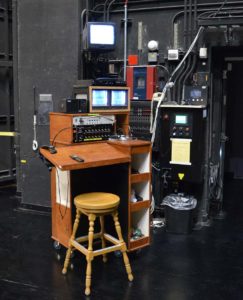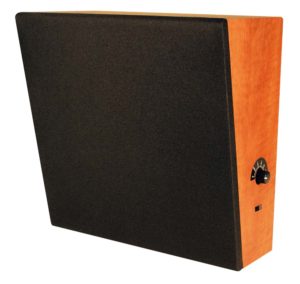Now Hear This…Monitor and Paging for Performing Arts
The design of Backstage Performance Monitor and Stage Manager Paging systems is the domain of the audio systems designer. But…and it’s a big but…the theater consultant participates in budgeting, meetings, and checking of the sound system documents throughout the design process, offering a gentle and considerate review to help the whole team understand and remember the production needs of a new building.
Everyone backstage needs to hear two things, 1) the progress of the show, and 2) the stage manager announcements, or “pages” from the stage manager. We are not talking about the production intercom, foldback monitors, or emergency page, which are three additional but separate audio systems.
The backstage performance monitor signal is picked up by a general coverage microphone hung over the stage or from the mixed signal for an amplified show and is distributed everywhere. The Audience Listening System (ALS) is also a good source. Corridors, offices, workshops, dressing rooms, green room, toilets, elevators, wig rooms, the loading dock, trap room: everywhere. If you are in your office and you call someone backstage on the phone during a road company performance, say in Peoria, you will hear the performance in the background being distributed backstage by the performance monitor system. It’s eerie when you call multiple touring companies of the same show on tour, as often happens, and hear Act 1 in the background on one call and Act 2 in the background on another call because the two touring companies you called are in different time zones. (An exception was No, No, Nanette, in which the song “Tea for Two” was repeated so often during the show that was all you heard in the background no matter which touring companies you called or which act was ongoing.) This backstage performance monitor system is essential.

The Stage Manager’s position in a professional theatre. Note all the communications above the prompt desk shelf. Photo by Paul Sanow, ASTC.
The stage manager paging signal is for the stage manager to make announcements to the company, in a friendly, but serious voice, including, “Ladies and gentlemen, half hour please, half hour,” or, “Male chorus stage left please.” The stage manager paging signal originates with a microphone at one of the several stage manager’s possible locations. These locations might include the stage doorman’s booth, the tech desk in the auditorium center, the control room, downstage left, or downstage right. Multiple locations might be used in one performance and the locations might change from one show to the next. Whichever location is being used at the time; the page signal is distributed to all the same locations backstage that the backstage performance monitor signal is distributed. The standard paging system offers no opportunity for talkback to the stage manager. It is “page only.” This paging system is essential.
The differences between these two systems, monitor and page, are subtle and important. The two systems share the same speakers and are almost identical.
Differences include:
- The stage manager page signal is not under local control. The stage manager announcements must get through to everyone loud and clear no matter what.
- The performance monitor signal may be under local volume control in some locations. In dressing rooms and offices for example, there is a potentiometer in the speaker box or on the wall, by which the local volume can be adjusted. This allows an actor to rest or rehearse without being disturbed by the performance monitor, but still receive stage manager pages.
- The monitor and page system might need to be “zoned” so individual areas can be turned on and off from a central location. An example could be a side stage, which sometimes gets used as an independent rehearsal room and needs to be connected, while other times the area is open to the main stage during performance and needs to be silent. Other times such an area might be closed off and used as an accessory green room with both monitor and page. Consider all scenarios.
In Britain, this has been called a “Tannoy” system. It was developed by the Tannoy Company during the war and was installed in early London West End theatres. In some circles the name has stuck as generic shorthand for these communication systems.
In the past and in many cases to this day, these are 70-volt systems, utilizing signal wires with switching to control the source driving the local speaker. If a digital system is used, the functional requirements are the same and require great care in design to achieve this function.
In well-funded projects the audio-only performance monitor system is augmented (but not replaced) with closed circuit television (CCTV). Some lucky locations backstage have a video monitor with channel selector and volume control. The channel selector allows the monitor to display a choice of the available video feeds, like the conductor camera, the front stage view from the balcony, the view across the stage (useful when the house curtain is closed), an infrared or low light level camera, the feed from the video control truck parked out back or the broadcast from a local TV station (to check the opening night reviews or maybe check in on the World Series).
The performance monitor system is always on. Whatever you say on stage, no matter how confidential you think it is, is picked up by the monitor microphone and distributed to every backstage room. Be careful what you say on stage. You’ve been warned!
By Robert Davis, FASTC
Disclaimer: Any views or opinions expressed in this article are solely those of the author and do not necessarily represent those of the American Society of Theatre Consultants. This article is for general information only and should not be substituted for specific advice from a Theatre Consultant, Code Consultant, or Design Professional, and may not be suitable for all situations nor in all locations.



